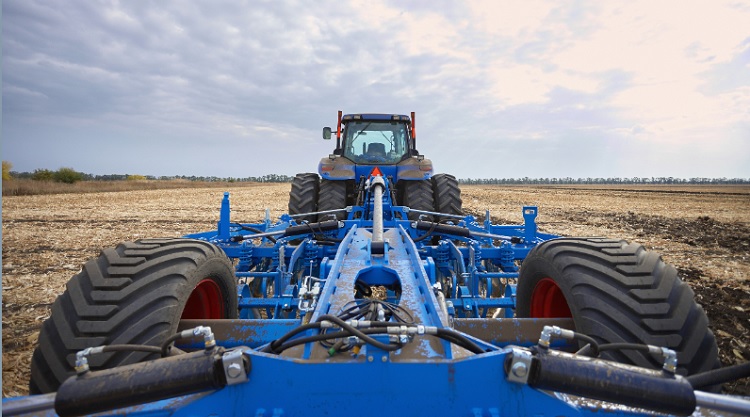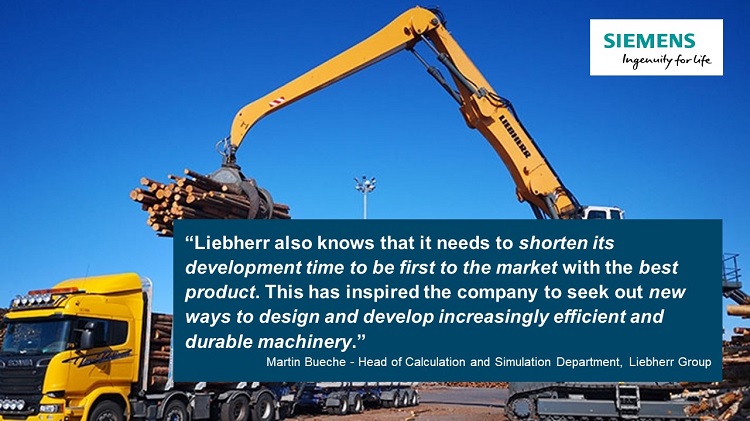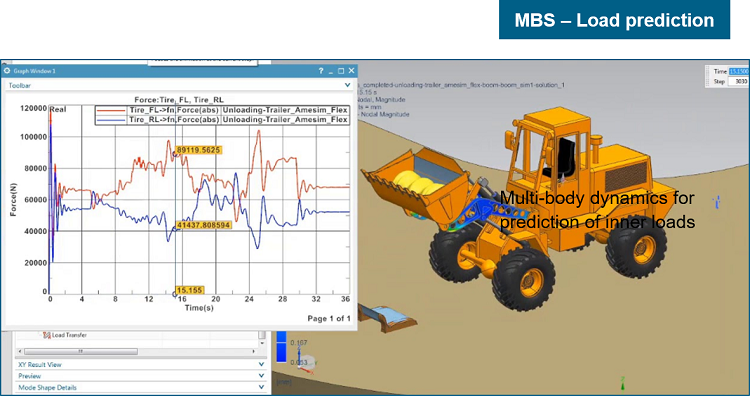Designing heavy equipment to meet structural integrity and durability requirements

Where today meets tomorrow – meeting the performance engineering demands of tomorrow’s heavy equipment machines
Backhoe loaders are smaller, more versatile and more adaptable than almost any other piece of construction equipment. Their ability to perform a wide variety of tasks, such as earthmoving, landscaping, small demolition, equipment transportation and even paving roads is why they’re one of the most popular, and for manufacturers one of the most competitive, construction equipment options on the market.
It’s not just backhoes that are highly competitive though. Being successful in this market takes ingenuity, innovation and advanced technology.
Amid varying trends and increasing complexity in designing the structural integrity of construction equipment, and other heavy equipment for mining or agriculture, manufacturers face challenges with advanced technologies, stringent local regulations and customization demands.
Let’s take a look at some of the trends in the heavy equipment industry centered around structural integrity.
- Efficiency. Governments are placing stricter emission regulations associated with air and noise pollution. On top of that, finite resources such as oil demand sustainable solutions, such as moving from combustible engines to electrification.
- Versatility. Customers, contractors and operators use these machines for a wide range of work and are under pressure to deliver timely performance without compromising durability. Customers are also demanding more universal machines to get the highest amount of work at the lowest cost.
- Economy. The race for market share has never been harder. To meet customer demand, more product variants are offered on the market in a shorter amount of time. Innovation and costs are more important than ever before. Downtimes caused by failures as well as with maintenance work are impacting the productive operation and cost of ownership.
Reliability remains a crucial selling point together with efficiency, versatility and costs. The biggest factor is how all of these effect brand image. Lack of reliability or the previously mentioned trends can reflect poorly on a brand’s image.

So, how do you deliver a more reliable, lower cost machine that is also lighter, stronger and more durable?
The first is to explore the customer and determine their needs. This incorporates local customer use and loading needs to set realistic durability targets. Observing how customers actually use the product helps to understand their needs. To meet these customer demands, the right design targets are set according to customer and market requirements. This prevents both over-design and under-design.
Frontload engineering is used for virtual prototyping validating strengths and the performance of machines subsystems and components before committing to physical prototype. Virtual products and prototypes can predict loads, stresses and fatigue in different development stages reducing the number of prototypes and tests needed without sacrificing reliability.

The goal is to drive discovery early in the design process where modeling and simulation lead to updates and enhancements at the lowest cost. Any issues discovered in the concept and design phase are significantly less costly than those found in production where time to make changes is significantly shorter.
Using simulation for virtually testing and validating components
With simulation, individual components are tested in a simulated field as well as how components interact in a comprehensive virtual test bench. Not only can simulation enlighten interaction between components, which can then be enhanced or balanced within a digital twin, but virtual testing of real-world factors can provide data on performance. For instance, how does the system or specific component react on hard roads versus smooth roads? Or how will it manage obstacles in the road?
This data can be used to retest and validate individual components after optimization.

Of course, the challenges include data gathering in real use and real-world scenarios on top of big data analysis, development of insight on customer usage (events and loading) and statistical quantification, and correlation of test and simulation using proven data analytics.
This begins at the concept stage when customer observation and condition monitoring take place. Instrument readers and sensors can record information on the current performance of machines and transfer it wirelessly to the cloud where it’s stored. Data collection is obviously key to building the simulation in which tests are conducted, but more important is understanding the data, knowing what it means and how to build the simulation.
On the simulation side, model-based simulation provides concept analysis, composition analysis and predictive analysis. During concept analysis, the design team can undergo component assessments to determine if components from a previous design or machine can be reused or if it needs to be created.
Predictive analysis determines how the heavy equipment operates when in the field. Through condition monitoring and continual feedback combined with simulation, maintenance needs are predicted allowing users to factor and schedule in downtime. Predictive analysis can determine expected problems in performance or with components within its lifetime.
Design space exploration and functional requirements
There are two areas that influence the design space and requirements of building the machines. The first is customer influence. Analysis of the machine usage loads depending on its configuration and customer, from engine type to the market the machine is to be used, all of which is in respect to fatigue loadings, acceleration forces and other factors.
The other influence are the design parameters. This influence regards functional quantities, such as new axle kinematics with respect to component loads.
A virtual test bench ensures design teams can test the components and machine’s attributes in a simulated environment before creating a physical prototype. The virtual test bench means that teams can alter scenarios and simulate a variety of environments to ensure requirements are met. Once tested in the real-world, that data can be fed back into the test bench to gain further insight.
A new era of durability engineering
When the goal is to deliver lighter, stronger and more durable machines, challenges surrounding time, costs and sustainability are strongly in the minds of the design teams. How do you become the first to market with the most durable and innovative product that fulfills customer demands, market requirements and functional requirements?
It begins with knowing the customer and their conditions, which leads to concept modeling. In the early stage, virtual prototyping and simulation gives designers the upper hand when balancing multi-domain and multi-physics directly impacting the structural integrity and durability of the heavy equipment.
Our Xcelerator portfolio is how heavy equipment manufacturers can bring digitalization to the workplace to maximize efficiency, reliability and durability when building tomorrow’s complex machines. Read more about what Xcelerator can do for you.
Learn more about how we are helping manufacturers be more productive by delivering heavy equipment with greater structural integrity and durability.
Watch the full webinar: Improving heavy equipment structural integrity & durability performance


